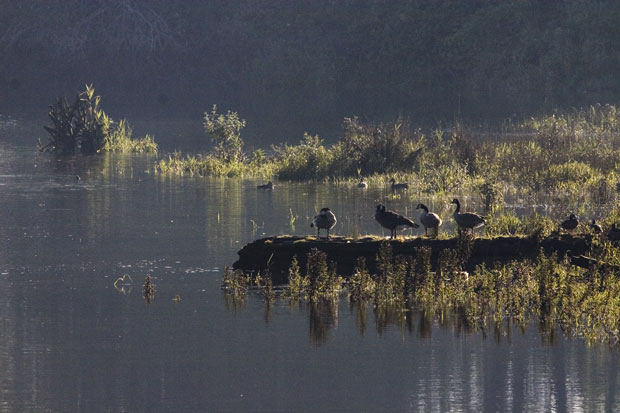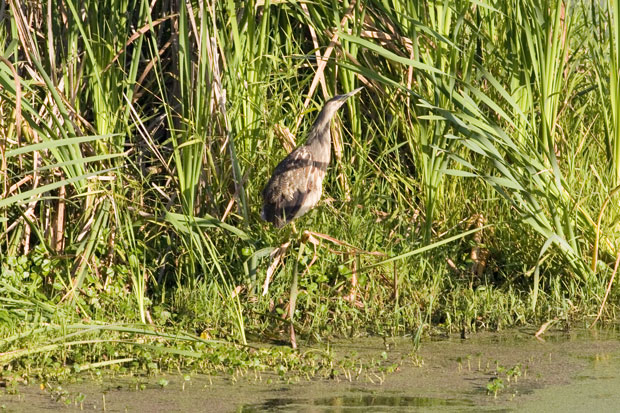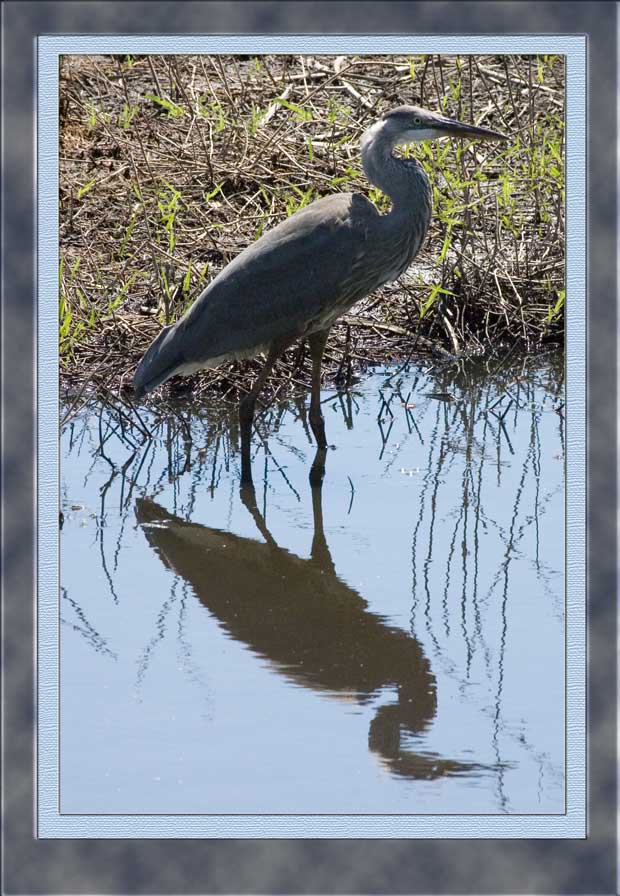Walking the Nisqually National Wildlife Refuge the last two weeks I’ve been struck by how many visitors seem preoccupied with mere exercise, apparently unaware of the abundant wildlife. Many pay more attention to the iPod stuck in their ear than to the rich symphony of bird songs surrounding them.
Though I’ll admit to being attracted to the novelty of seeing new birds, I’m mainly walking there once a week because walking the same paths day after day in Point Defiance Park, as beautiful as they are, can become routine. One begins to take even such beauty for granted.
Looking and listening for new birds serves as a focal point for paying attention to what is, increasing my overall awareness and enriching the whole experience.
I am as delighted to notice small frogs swimming in a primordial soup,
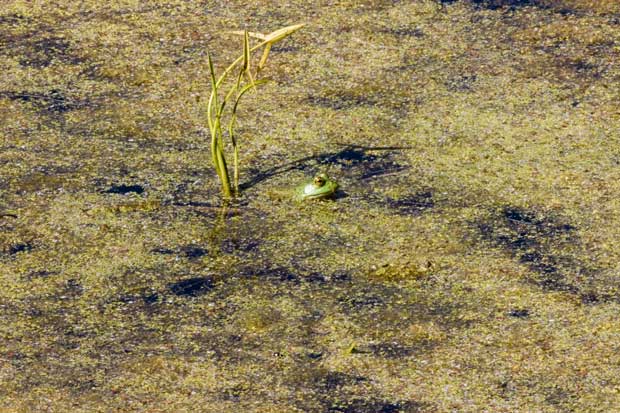
or to lose myself in abstract reflections of reeds in crystalline water,
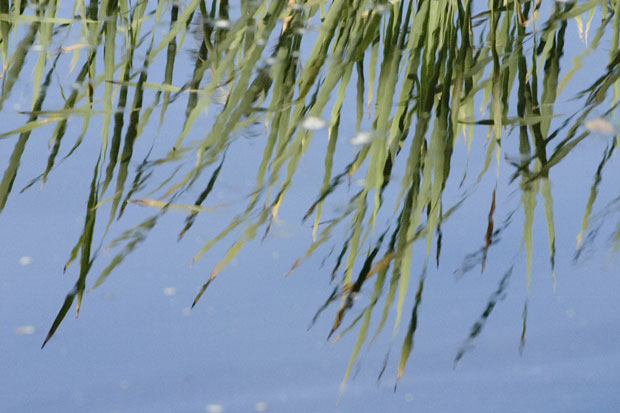
as to glimpse a hawk swooping in the distance,
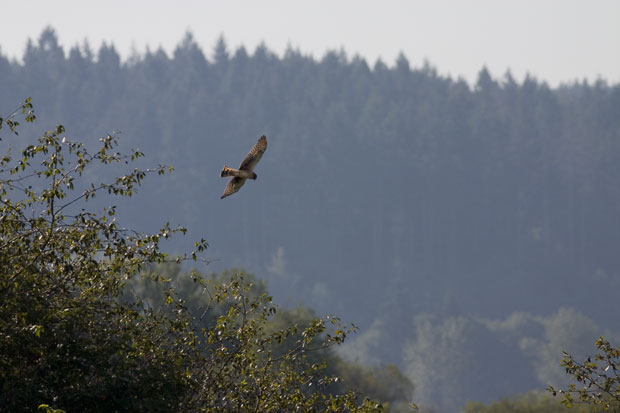
reminding me of Whitman’s barbaric yawp.
While standing gazing off into the distance, both near and far, a passerby asked, “Are you a decoy?” because I’d stood still for so long.
I was amazed to discover I had spent nearly five hours covering a little over 7 miles of trails. I must have spent considerable time standing because I can easily walk five miles in just over an hour.
Sometimes you have to slow down to get where you want to go.

